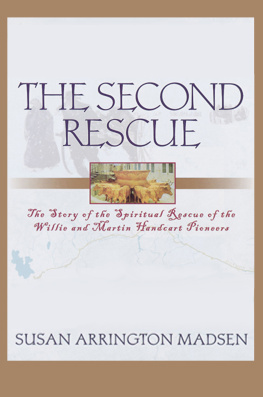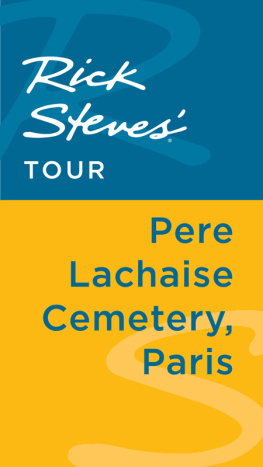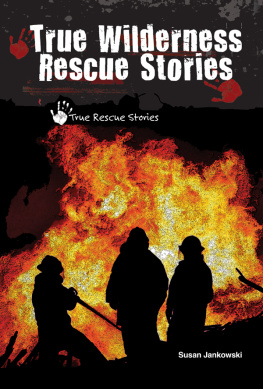Photograph courtesy of Rachel Hallman Schutz
PRE MARIE-BENOT AND JEWISH RESCUE
How a French Priest Together with Jewish Friends Saved Thousands during the Holocaust
Susan Zuccotti
INDIANA UNIVERSITY PRESS Bloomington & Indianapolis
This book is a publication of
INDIANA UNIVERSITY PRESS
Office of Scholarly Publishing
Herman B Wells Library 350
1320 East 10th Street
Bloomington, Indiana 47405 USA
iupress.indiana.edu
Telephone orders 800-842-6796
Fax orders 812-855-7931
2013 by Susan Zuccotti
All rights reserved
No part of this book may be reproduced or utilized in any form or by any means, electronic or mechanical, including photocopying and recording, or by any information storage and retrieval system, without permission in writing from the publisher. The Association of American University Presses Resolution on Permissions constitutes the only exception to this prohibition.

The paper used in this publication meets the minimum requirements of the American National Standard for Information SciencesPermanence of Paper for Printed Library Materials, ANSI Z39.481992.
Manufactured in the United States of America
Library of Congress Cataloging-in-Publication Data
Zuccotti, Susan, [date]
Pre Marie-Benot and Jewish rescue : how a French priest together with Jewish friends saved thousands during the Holocaust / Susan Zuccotti.
pages cm
Includes bibliographical references and index.
ISBN 978-0-253-00853-4 (cloth : alkaline paper) ISBN 978-0-253-00866-4 (ebook) 1. Marie-Benot, le Bourg d'Ir, 18951990. 2. Righteous Gentiles in the Holocaust France Marseille Biography. 3. Capuchins France Marseille Biography. 4. Priests France Marseille Biography. 5. Holocaust, Jewish (19391945) France Marseille. 6. World War, 19391945 Jews Rescue France Marseille. 7. Jews France Marseille History 20th century. 8. Marseille (France) History 20th century. 9. Marseille (France) Biography. I. Title.
D804.66.M337Z82 2013
940.5318350944912 dc23
2012047187
1 2 3 4 5 18 17 16 15 14 13
To
NICK, EMMA, SOPHIE, ROBBY, CASSIE, and NOAH
The heroic and fabulous feats of Father Marie-Benot in rescuing Jews from the Gestapo during the Nazi occupation of Rome should inspire us in the United States to protect and respect the civil rights of all people regardless of how they may differ from us in race, color, or creed. Father Benot saw the human dignity in the persecuted Jews and repeatedly risked his life to rescue them from the Gestapo and the incineration camps awaiting them. He blazed a trail for all of us to follow in protecting the civil and human rights of our fellow citizens and in thus respecting their dignity as fellow human beings.
PRESIDENT LYNDON B. JOHNSON
Pageant, November 1964
I have a tree planted in the alley of the Righteous at Yad Vashem in Jerusalem. This tree does not only represent me, it also represents the courageous Jews with whom I fought and without whom I would not have achieved a great deal.
PRE MARIE-BENOT
1975
Acknowledgments
MY LIST OF ACKNOWLEDGMENTS OF ASSISTANCE KINDLY GIVEN and gratefully received must necessarily begin with Pre Marie-Benot himself. I met this remarkable Capuchin priest on April 25, 1988, at the monastery in the rue Boissonade in Paris, where he spent the last three decades of his life. He was ninety-three years old at the time of my interview, a large man but frail and hard of hearing. Yet he was still willing to give time and attention to a stranger. Under the circumstances, not all of my questions could be answered, but the impression I received of a kind and gentle man has stayed with me ever since. When we met I did not know how ill he was, or that he would be leaving the monastery within a year for the rest home for elderly Capuchins in Angers, where he would pass away on February 5, 1990.
As I was leaving the monastery, a slightly younger man who also had an appointment with Pre Marie-Benot arrived. He introduced himself as Stefan Schwamm, the Jewish lawyer from Vienna with whom Pre Marie-Benot had worked in Rome during the Second World War to rescue thousands of refugees. The two men had remained close friends for the rest of their lives. My acquaintance with Stefan Schwamm was brief, but I was grateful for it; the other Jewish friends with whom Pre Marie-Benot had cooperated in rescue operations were all deceased. Mr. Schwamm appeared to me then exactly as he seemed in the documents I later studied: lively and curious; charming where Pre Marie-Benot was reserved; loquacious where Pre Marie-Benot was reticent. He must have wondered who I was and why Pre Marie-Benot had agreed to see me. After I left, Pre Marie-Benot would have explained my presence to him, adding, How could I say no? He said the same about the thousands of Jewish refugees who knocked on his doors between 1940 and 1944.
Stefan Schwamm died six years later, on February 9, 1994. When I examined his personal archives in Frankfurt am Main, Germany, in 2010, it appeared that his visit to Pre Marie-Benot when I saw him may have been his last. Previously he had visited often. Time was running out for these two elderly gentlemen that day in 1988, but both were willing to share their memories. Perhaps they were eager to do so, lest the most important events of their lives be forgotten. I wish I could tell them in person how grateful I am.
Years later, when I began to seriously study the life and times of Pre Marie-Benot, I had several technical concerns. From prior research I knew that I would have little difficulty finding material about that Capuchin priest's wartime rescue activities. I had already worked in two comprehensive Jewish archives the Centre de documentation juive contemporaine (CDJC) at the Mmorial de la Shoah in Paris and the Centro de documentazione ebraica contemporania (CDEC) in Milan and I was aware that there was ample material about Pre Marie-Benot in those two vast collections of documents. But I was much less certain about whether I would be able to unearth information about the priest's childhood and early education, or his military service and religious training. Equally daunting, would I be able to learn anything about how he spent the many postwar years of his long life?
I need not have worried. Beginning at the beginning, I traveled to the tiny village of Le Bourg d'Ir, in western France not far from Angers, where Pre Marie-Benot was born in 1895. There I had the good fortune to meet Jean-Pierre and Jocelyn Legourgeois. Jean-Pierre, the author of several volumes of the history of Le Bourg d'Ir from the Middle Ages to the present, seemed to know the genealogies of every resident of the village. He knew all about the family of Pierre Pteul, the boy who, upon ordination, would take the name Pre Marie-Benot. Not only did he share that family's genealogy with me, but he also drove me around the village, showing me the ruins of the mill and house where Pierre Pteul/Pre Marie-Benot was born and explaining the social and economic structure of a French region at the end of the nineteenth century. And then he invited me home for lunch. I was deeply impressed by this example of French hospitality. My gratitude to Jean-Pierre and Jocelyn is beyond words.



 The paper used in this publication meets the minimum requirements of the American National Standard for Information SciencesPermanence of Paper for Printed Library Materials, ANSI Z39.481992.
The paper used in this publication meets the minimum requirements of the American National Standard for Information SciencesPermanence of Paper for Printed Library Materials, ANSI Z39.481992.









